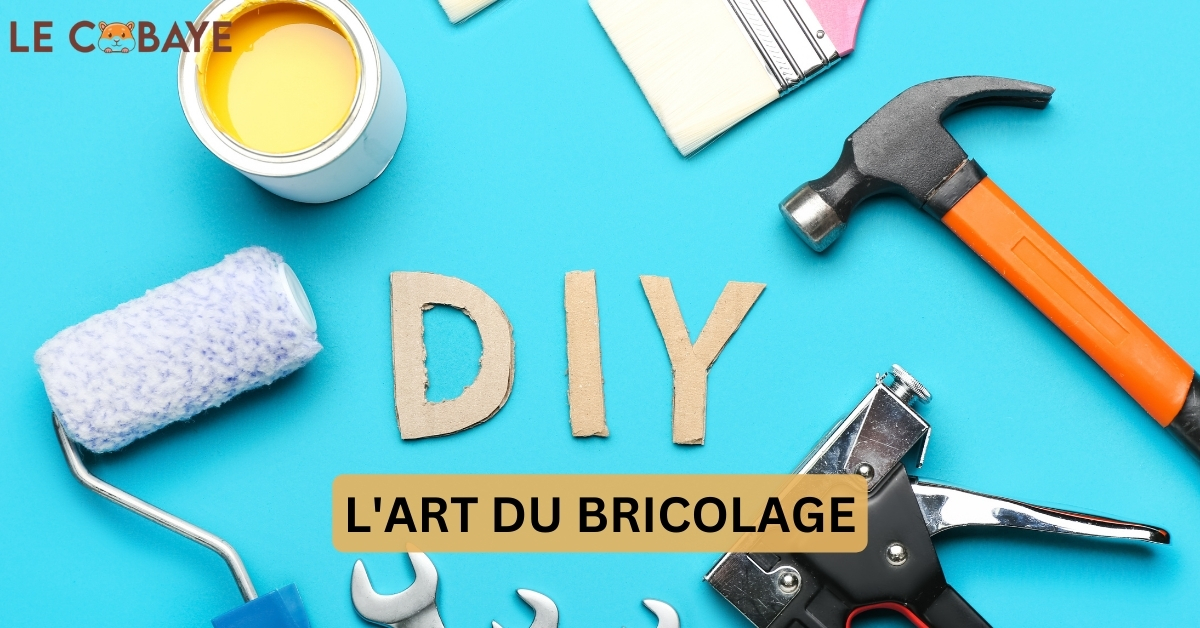THE ART OF DIY: TRANSFORMING YOUR HOME INTO A MASTERPIECE OF CREATIVITY
DIY is more than just a necessity; it is a passion that allows each of us to transform our environment, express our creativity and feel the satisfaction of accomplishing something with our own hands.
In a world where everything is just a click away, getting up, picking up a hammer or paintbrush, and creating or repairing something yourself offers a deeply rewarding experience.
This article explores the many facets of DIY, from simple beginner projects to major home transformations, while providing tips for making each project successful.
This article aims to inspire and guide DIY enthusiasts, from novice to experienced, by providing project ideas, practical tips, and a list of essential tools to get started.
DIY is a door open to a world of creativity and autonomy; you just have to take the first step.
GETTING STARTED WITH DIY: FIRST STEPS
To get started in DIY, it is not necessary to have a complete workshop or prior experience. Start small, with projects that require few tools and materials.
For example, painting a wall, changing a faucet, or putting together a shelf are great ways to get started with DIY. The main thing is to choose projects that motivate you and not be afraid of making mistakes – that's how you learn best.
ESSENTIAL TOOLS FOR THE DIYER
Before diving headfirst into your projects, make sure you have the basic tools. A starter kit should include:
- A hammer
- A set of screwdrivers
- A drill
- A saw
- A level
- A measuring tape
- Protective glasses and work gloves
With these tools, you will be ready to tackle the majority of household DIY projects.
INSPIRING PROJECTS FOR ALL LEVELS
- Beginners: Creating a wooden planter is a great starter project. This allows you to practice cutting, drilling, and screwing, while adding a touch of greenery to your space.
- Intermediaries: For those with a few projects under their belt, renovating an old piece of furniture can be a rewarding challenge. Sanding, painting, or even changing handles can completely transform an object.
- Advanced: Building a custom bookcase or decorative partition requires more skill and planning, but the result can truly transform a room.
TIPS FOR SUCCEEDING WITH YOUR DIY PROJECTS
- Plan Ahead: Before you begin, make sure you have all the necessary materials and tools. A good plan will save you unnecessary trips to the store.
- Measure Twice, Cut Once: It's an adage as old as time, but its truth remains undisputed. Accurate measurement is the key to success.
- Safety First: Never neglect personal protective equipment. Safety glasses, gloves, and masks are essential to avoid accidents.
UNDERSTANDING MATERIALS
Before embarking on a project, it is crucial to understand the materials you will be using. Wood, metal, plastic, or fabric – each material has its specificities, its working methods and its adapted tools.
For example, wood can be soft or hard, which will influence the type of saw or drill to use. Taking the time to learn about materials will help you choose the right tools and techniques for your projects.
ADVANCED DIY TECHNIQUES
Beyond basic skills, there are more advanced techniques that can improve the quality and finish of your projects.
Learning how to make wood joints, such as dovetail joints or mortises and tenons, can add strength and aesthetics to your creations. Likewise, mastering finishing techniques, such as varnishing or lacquering, can protect your projects and give them a professional appearance.
TOOL SAFETY AND CARE
Safety should never be neglected. In addition to wearing the right protective equipment, it is important to know how to use each tool correctly and maintain them to keep them in good condition.
A well-maintained tool is safer and will perform better. This includes regular cleaning, sharpening blades, and checking cables and batteries for power tools.
INSPIRATION AND RESOURCES
For those looking for inspiration or step-by-step guides, the internet is full of resources. DIY blogs, YouTube channels, and expert forums can offer tutorials, tool reviews, and valuable advice from experienced DIYers.
Attending local workshops or online classes can also be a great way to learn new skills and meet other DIY enthusiasts.
ECOLOGICAL AND SUSTAINABLE PROJECTS
Finally, consider the environmental impact of your projects. Opting for recycled or sustainable materials, using eco-friendly paints and varnishes, and even building energy-saving installations (like rainwater harvesters) can make your DIY passion greener.
DIY is an enriching adventure that transforms not only our environment but also our relationship with the objects around us. By taking the time to create, repair, and improve, we make our living space more personal, more comfortable, and more in our image. So, what will be your next creation?
DIY is a vast and rewarding field, constantly offering new skills to learn and projects to complete. Each completed project not only gives you the satisfaction of having created something beautiful and functional but also allows you to improve and prepare you for even greater challenges.








Muchas gracias. ?Como puedo iniciar sesion?